Welcome to my blog post on how long should you sauna for skin health benefits. I’ve written several blog posts on how long you should sauna for different health benefits. This time, I’ll cover an extremely popular topic: saunas and skin health.
I’ve written several blog posts on different infrared saunas and skin health topics in the past, such as:
- Is A Sauna Good For Your Skin?
- Are Infrared Saunas An Effective Treatment Of Acne?
- The Unknown Infrared Sauna Eczema Fix
- Infrared Sauna And Psoriasis: The Promising Science
- How To Gua Sha In A Sauna
This blog post is mainly about treatment protocols and how to optimise your sessions for different goals. I’ll cover goals such as increasing your collagen and elastin production in the skin, countering skin conditions such as eczema, psoriasis and acne, and tell you the differences between using a traditional sauna for skin health versus an infrared sauna.
How Long Should You Stay Inside A Sauna For Clear Skin?
What Are The Benefits Of Saunas For The Skin?
First up, I’ll consider the general benefits of saunas for skin health. The research on this topic is extremely exciting as tons of people suffer from skin conditions worldwide.
And you may also think: “I don’t know a person older than 30 who doesn’t want to look younger again”
In that case you’re correct! So let’s dig deep into this fascinating topic:
Skin Health Basics
The skin is your largest organ. That skin also provides the biggest interface between your body and the outside world. Skin problems, however, are present way more than you’d intuitively think.
In the UK, a whopping 60% of people either currently has a skin condition or had one in their livetimes (1; 2; 3; 4). And 20% of UK children currently have eczema and a third have a skin condition. Living with a skin condition isn’t easy as it often psychologically affects you.
Skin conditions, for instance, influence your mood, the acceptance you get from others sometimes, your sexual life, and other areas. And people with skin conditions also frequently experience less happiness than those without.
But what can you do?
Well, fortunately the science of lifestyle interventions on skin health is developing rapidly (5; 6; 7; 8; 9). Being overweight or obese, smoking, drinking alcohol, excessive exposure to artificial blue light (especially at night) and sleep deprivation all have massive impact on skin quality. And, exercising, sweating, eating a healthy diet, and other lifestyle interventions accomplish the reverse.
This is also where saunas - especially infrared saunas - come in. Infrared saunas can be a massive tool in the toolbox to counter skin conditions and make your skin look healthier, especially when applied correctly.
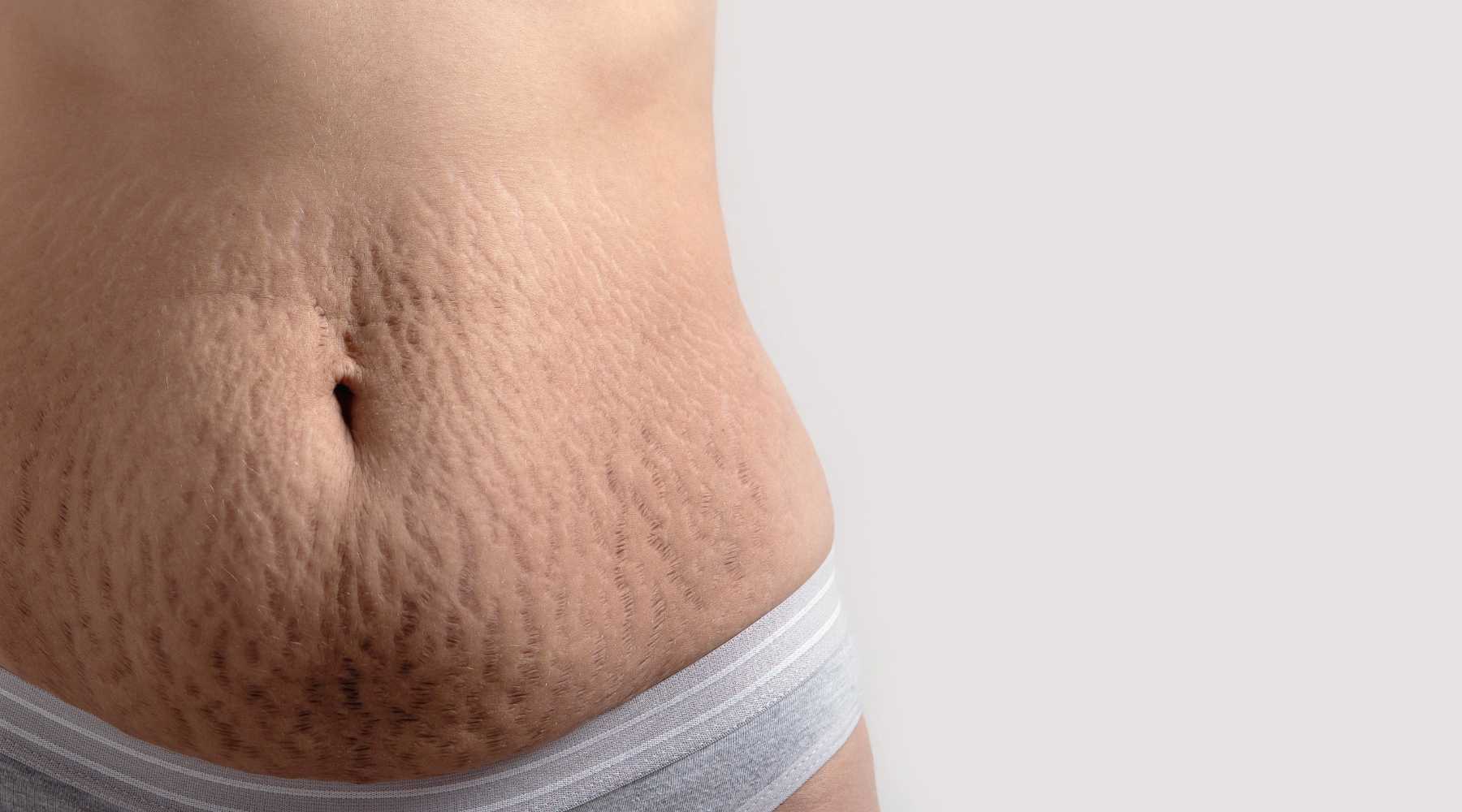
Do Saunas Tighten Your Skin? The Effects On Collagen, Elastin, And More
You may think: “but how does spending time in a sauna tighten my skin? Don’t I just start sweating and doesn’t that sweating then dry out my skin?”
Absolutely not. In fact, the opposite is true. Here’s why:
Infrared saunas emit so-called infrared light. You feel that infrared light in the same way you feel heat if you’re standing in the sun. To be more precise, it’s exactly the infrared light that makes the sun feel hot on your skin.
And, that infrared light doesn’t just hit your skin. Instead, infrared light enters your body and affects you at a cellular level. The light can penetrate several millimetres and up to several centimetres, depending on the type of infrared light and it’s strength (10; 11; 12: 13: 14: 15: 16; 17).
That infrared light then acts as a nutrient in your cells. Energy production is increased, for instance. And with increased energy availability, your body can better maintain its skin health.
And, with exposure to different types of infrared there’s also an increase in the amount of collagen created (18; 19; 20; 21). Different types of cells, such as fibroblasts and keratinocytes become more active and promote results such as improved wound healing and better beauty of the skin.
Unfortunately, mostly animal studies are available on this topic although some human studies exist as well. The body also increases Nitric Oxide (NO) production in the skin. That increase in NO subsequently leads to greater blood flow in the skin.
As little as 45 minutes of far infrared exposure already improves collagen production in the skin.
The research on near infrared light is also extremely promising (22; 23). Many different mechanisms exist by which near infrared light improves skin health. Examples here are that it also improves energy production just like far infrared does. Then, near infrared light activate signalling pathways and stem cells that both promote skin repair and health.
These results already occur after a few minutes, potentially. As a result, near infrared light has a huge influence on scars from different origins, wrinkles, and the quicker healing of burns. Even autoimmunity can be managed with near infrared light in some cases - some skin conditions have their origin in autoimmunity such as psoriasis.
Fortunately human studies exist in great quantities on near infrared light. In study on the long-term effects of near infrared, study participants received daily near infrared treatments (22). After six months, all 20 study participants reported good improvements in their skin quality. Those same participants also noted fair improvements in the colour of their skin at the same time.
Now here’s what’s most interesting:
The researchers independently came to the same conclusion. The laxity and roughness of the skin also improved. The very strong implication of this study is that the near infrared light improves collagen and elastin production of that skin.
The question then becomes: how can you best experience these skin health promoting effects of far and near infrared?
Simple, to begin with, you start with a far infrared sauna or a full-spectrum sauna. A full-spectrum sauna emits both far and near infrared light so you get more overall benefits. But don’t worry, if you opt for a far infrared sauna you can always upgrade it later with addons to make it full-spectrum.
Are Infrared Saunas Healthy For The Skin? And Why Do Collagen And Elastin Matter For Skin Health?
So now I’ve concluded that different types of infrared light are amazing for skin health - specifically the elastin and collagen in your skin. Other mechanisms are influenced as well, such as the body’s use of stem cells to make your skin look prettier.
Now here’s where I’m going:
Remember when you were 18 years old? If you’d compare your skin quality at that age to how you’re looking right now, there’s probably a difference. And even if you have amazing skin at 30 years old or 60 years old, you couldn’t achieve that amazing skin as easily as when you were young.
Why?
Simple:
There’s plenty of evidence showing that the amount of collagen in your skin goes down with ageing (24; 25; 26; 27; 28). Collagen makes up the bulk of your skin and elastin a tiny amount. Collagen gives your skin firmness while elastin gives it elasticity, as the names already imply. And then there’s another problem: elastin levels also go down with ageing, as does hydration.
The end result is simply that your skin looks slightly worse, decade after decade. However, lifestyle interventions such as infrared saunas (and a healthy diet or collagen protein supplementation). Also, incorporating sauna Gua Sha, or sauna dry brushing could potential improve the overall sauna skin benefits.
Next up, let’s consider what the best sauna for skin health is:
What Type Of Sauna Is Best For Skin Health Benefits? Infrared Saunas Versus Traditional Saunas
Sweating, by itself, is extremely helpful for skin health. And both traditional saunas and infrared saunas are a great tool for making you sweat. In this section, I’ll first explore the benefits of sweating and then tell you why infrared saunas are superior for skin health.
Sweating cleans out the pores of your skin, for instance (29; 30; 31; 32). Basal sweating is also important for maintaining skin hydration. Some extremely recent evidence from 2022 actually suggests that sweating is important for preventing dry skin in the first place.
But let’s take a step back:
When you’re heating up your body significantly, your body starts sweating to lose heat. Your heart starts pumping more quickly and blood vessels open up in your extremities. Blood flow to most of your skin therefore also increases.
That temporary overheating of the body and sweating comes with many all-round health benefits. For instance, extremely strong evidence exists that regular intense sweating improves heart and blood vessel health, reduces your risk of dementia, Alzheimer’s, and diabetes, helps detoxify your body through your skin, and aids in sustainable fat loss.
Many of these domains are also associated with skin health directly.
Let’s take one example, that of stress. There’s tons of evidence that psychological stress is very detrimental to skin health (33; 34; 35: 36; 37). And, there’s tons of evidence that spending time inside a sauna massively improves your stress levels. Hence, through such indirect mechanisms, spending time inside a sauna aids skin improvement.
Stress negatively affects the microbiome on the skin, for instance. And stress hormones like adrenaline and cortisol can decrease the blood flow to the skin, making it appear worse. And, everyone how much worse your skin looks after lots of stress and a night of sleep deprivation.
Sleep is yet another area in which many people experience massive benefits from saunas. So by sweating heavily, you improve sleep quality. And by improving sleep quality - such as the amount of deep sleep you get each night - you improve skin quality.
Easy peasy…
So theoretically, both a traditional sauna and an infrared sauna can help your skin quality massively because they both make you sweat like crazy, right?
But here’s the deal:
A traditional sauna only heats up the air around you. That hot air then heats up your body. Infrared saunas expose you to infrared light. That infrared light moves through the skin and influence you at the cellular level as a nutrient.
So you won’t get the full skin improvements benefits of far infrared and near infrared light by using a Finnish sauna or a steam room. Sure, the benefits of Finnish saunas and steam rooms are still great, but they’re not as amazing as an infrared sauna.
Also, you could upgrade your infrared sauna with an accessories to get even more skin health promoting benefits. I’m talking about red light therapy here, using our Red Light Therapy Tower. That red light therapy product can be added to any of our infrared saunas.
Why would you?
Lots of evidence exists red light therapy promotes skin health at many different levels (38; 39; 40; 41). Skin appearance improves, for instance, while you get more collagen in the skin, wound healing accelerates, scar tissue becomes less prominent, and your skin will have an overall more youthful appearance.
Such a red light therapy product cannot be added to a traditional sauna, right now. The reason is that the indoor sauna temperatures would damage the product.
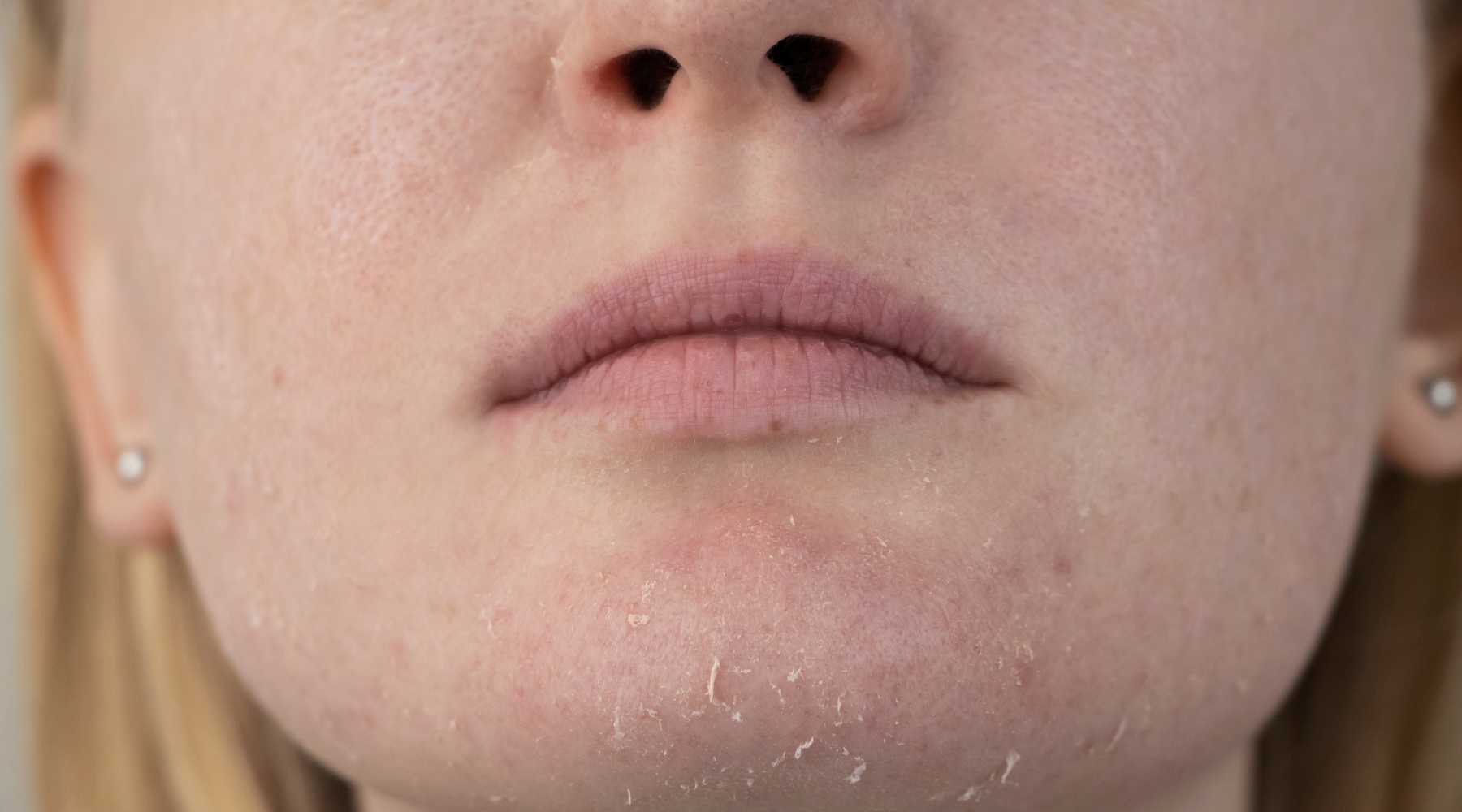
Are Saunas Good For Facial Skin?
Yes, saunas are absolutely good for skin health of the face. As long as your face gets some of the exposure to the infrared light, the skin of your face receives benefits too.
For the best results though, I do recommend using a Red Light Therapy Tower. That red light therapy tower emits red and near infrared light that directly hits your face and influences the skin at a cellular level there.
How Saunas Cause Improvements In Blood Flow? And How Does Blood Flow Influence Skin Health?
Saunas massively improve blood flow (42; 43; 44; 45; 46). Ageing also decreases blood flow to the skin. Hence, saunas can be a great aid in at least lessening the age-related decrease in skin blood flow. Some skin conditions, such as dermatitis and ulcers are even related to decreased blood flow in the skin.
Nevertheless, more research is needed into the exact effect of increasing circulation on skin conditions such as acne, psoriasis, eczema, atopic dermatitis, and others. Anecdotally, however, many people report great benefits from infrared saunas on their skin health. And, the benefits I described in earlier sections of this blog post are still valid for everyone, regardless of potential skin conditions.
Next up, let’s consider how often you should sauna for the best results:
The Best Sauna Session Frequency For Skin Health
Let’s now consider the ideal sauna frequency for skin health. In other words, how many sauna sessions per week should you use to optimally improve your skin?
First off, I quote the study where participants had massive improvements in their skin quality over a 6-month period (22). In that study, participants used near infrared on a daily basis.
Seven days a week is a bit extreme though. Of you consider the health benefits of infrared saunas in many other cases, such as heart health or diabetes prevention or losing body fat, four to seven weekly sessions almost universally gives the most health benefits across the board.
So in this case too, I recommend using a sauna four to seven times per week. The exact sauna session duration depends on your overall health.
If you’re in poor health you should start very slowly, with a 10-15 minute infrared sauna session to begin with. Both during and after your sauna session you should feel good. And, in case of a medical condition, always consult your physician on whether you an safely use an infrared sauna in the first place.
If you’re in good health, you can start with a 20-30 minute session and work your way up from there. The end goal is to do a 40-45 minute session four times weekly for the best skin health results.
And, as stated before, you can add a Red Light Therapy Tower to gain even better results in the same amount of time. Red light therapy can be used at the same time you’re using the infrared sauna.






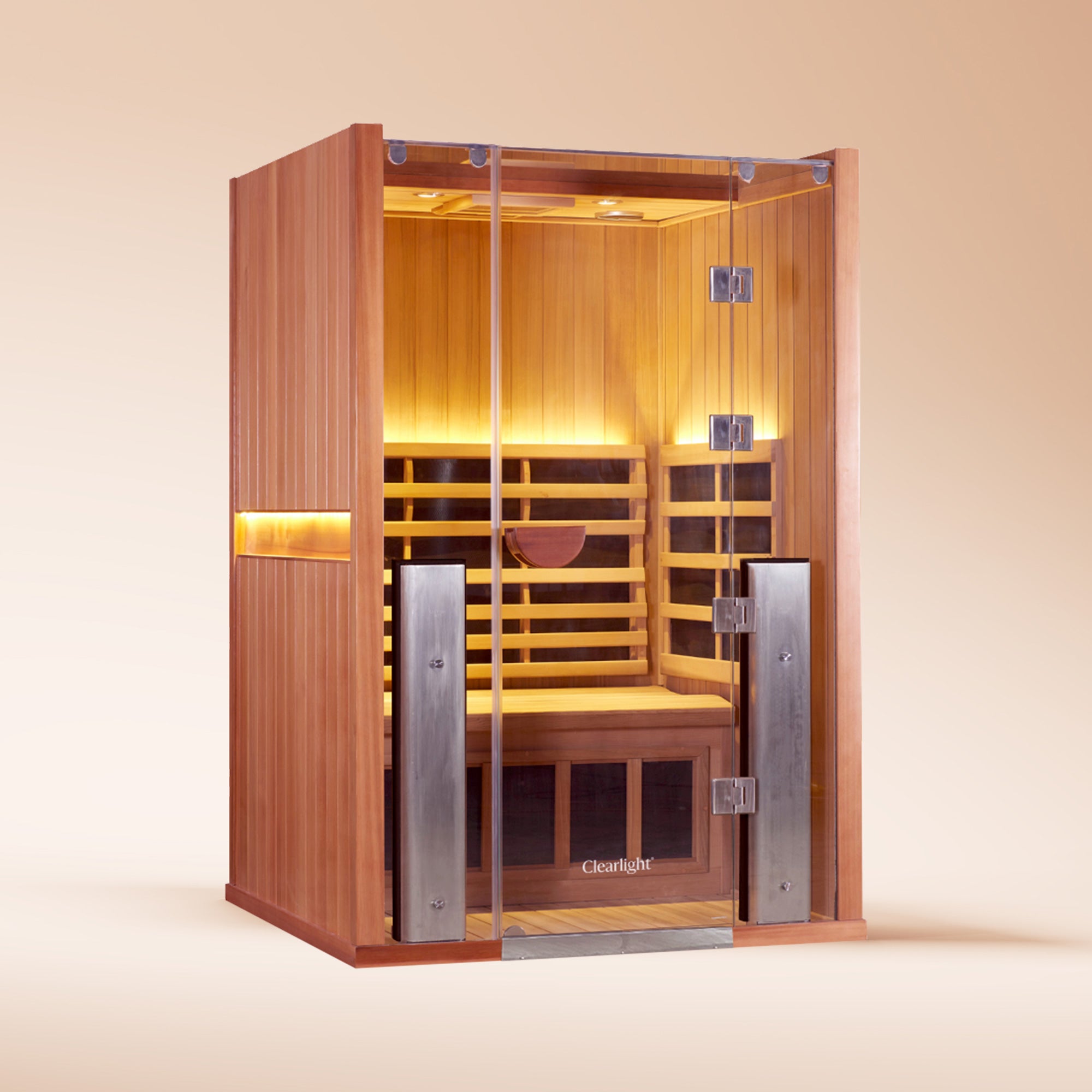

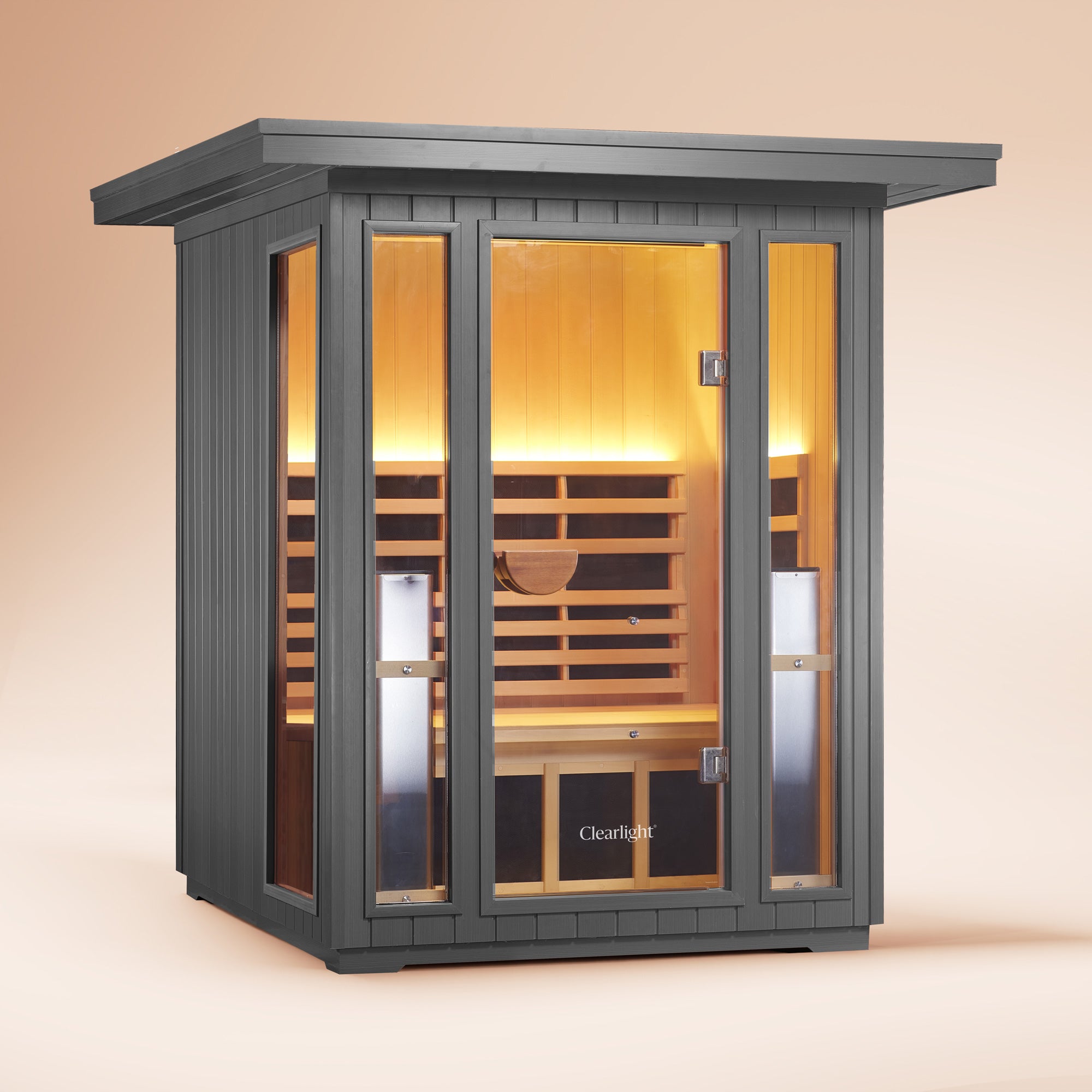

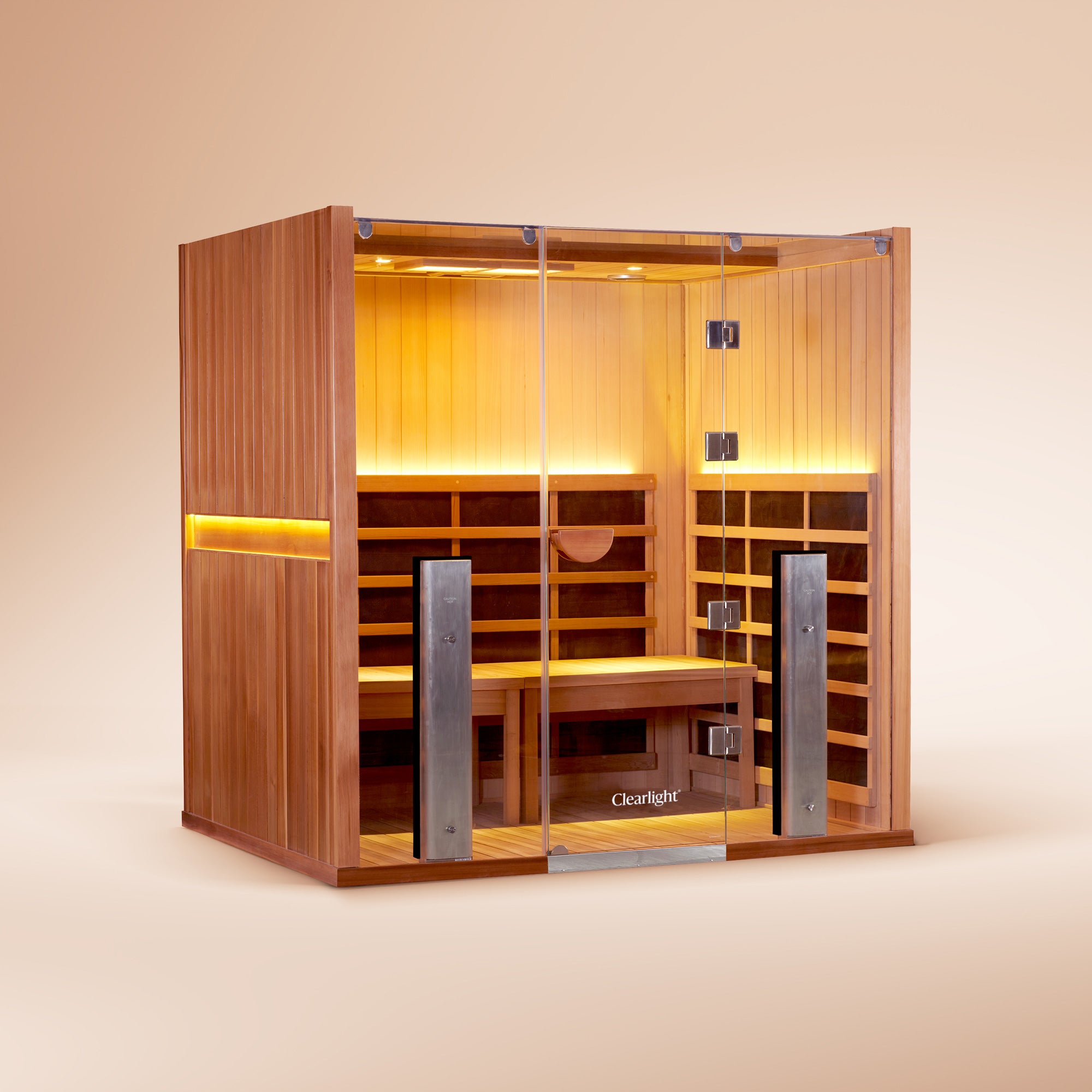
How Long Should You Sauna To Boost The Immune System?
How Long Should You Sauna For Stress Reduction Benefits?